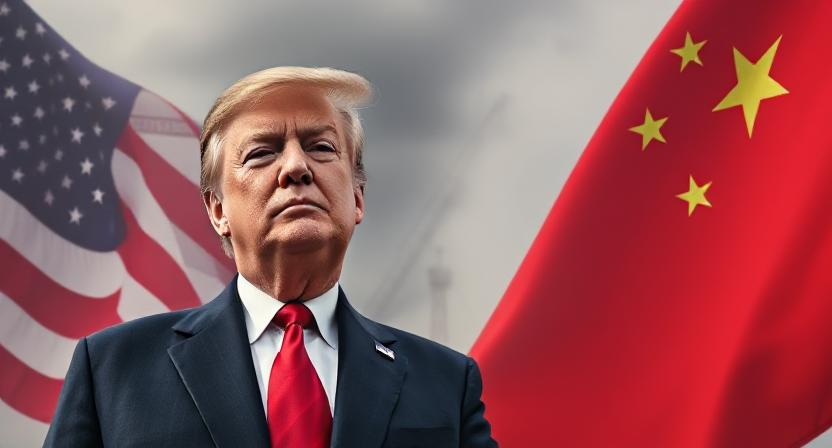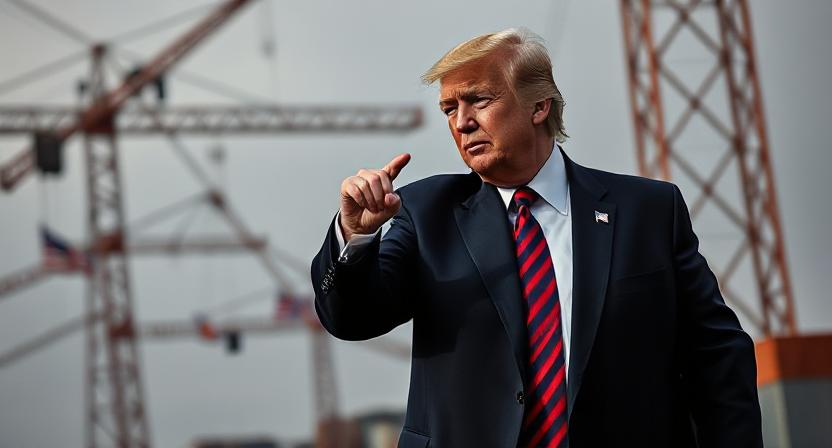The subject of trade and tariffs has been one of the most heavily debated topics in the United States, especially during Donald Trump’s presidency. His approach to international trade agreements and tariffs became a defining feature of his political and economic agenda. Trump famously promised to “Make America Great Again” by prioritizing American jobs, renegotiating trade deals, and making sure that foreign countries are playing by America’s rules.
One of his most ambitious projects was his administration’s shift to a more protectionist trade policy, marked by tariffs on imported goods, particularly from China, and efforts to renegotiate trade agreements like NAFTA, which was later replaced by USMCA.
As with many of Trump’s statements on trade, his public opinions about tariffs and the state of global trade were often considered very bold. However, as with many other subjects that the president addressed, his claims often prompted scrutiny. In this article, we will take a deep dive into some of Trump’s most notable statements about trade and tariffs and see how they stack up against the facts.

Trump’s Claim: “We have the highest tariffs in the world.”
During his presidency, Trump repeatedly claimed that the United States had the highest tariffs in the world, saying that America’s trade woes are owed to the fact that other countries impose big tariffs on U.S. exports. However, Trump’s claim that the U.S. has the highest tariffs is misleading. According to the World Bank and the World Trade Organization, the U.S. generally ranks low in terms of average applied tariffs compared to many other countries.
In fact, the U.S. has historically had relatively low tariffs on imports, especially in comparison to emerging markets and developing countries. For example, countries like India, Brazil, and China have higher average tariffs on certain categories of goods.
While it’s true that the Trump administration did impose higher tariffs on some specific goods-most importantly, Chinese goods—these were part of an effort to address what the administration believed were unfair trade practices and intellectual property theft. However, these tariff increases were exceptions rather than the rule and didn’t place the U.S. at the top of global tariff rankings.
Trump’s Claim: “The trade war with China is not hurting us. In fact, it’s good for us.”
Trump repeatedly insisted that the trade war with China–marked by a series of tariffs on Chinese imports—was not damaging the U.S. economy. Instead, he claimed that it would eventually lead to stronger American manufacturing and a better trade deal with China.
The trade war with China, especially in the early years, had many noticeable negative effects on some sectors of the U.S. economy. U.S. farmers, for example, were hit hard by tariffs imposed by China on agricultural exports. The U.S. soybean industry, a key export to China, was particularly affected. According to the U.S. Department of Agriculture, U.S. agricultural exports to China have fallen significantly since the start of the trade war.
Additionally, the tariffs on Chinese goods raised costs for U.S. consumers and manufacturers, leading to higher prices for a range of products, from electronics to clothing. While some industries, like steel and aluminum, may have benefited from protectionist policies, overall, the trade war caused a lot of uncertainties in global supply chains. Trump’s claim that the trade war is good for the Americans ignores these negative impacts.
Trump’s Claim: “ China is responsible for stealing hundreds of billions of dollars in intellectual property from the United States.”
This claim became a central point in the Trump administration’s trade war with China. Trump said that China’s intellectual property theft, through forced technology transfers and cyber espionage, costs American companies hundreds of billions of dollars each year.
The claim of intellectual property theft is not without basis, as this is a significant concern for U.S. companies that operate in China. According to reports from different organizations like the U.S. Trade Representative and the Office of the National Counterintelligence Executive, China has been involved in many cases of intellectual property theft and forced technology transfers. U.S. businesses, especially in the technology and pharmaceutical sectors, have always complained about these practices, which have been seen as barriers to fair competition.
However, the $300 billion figure that Trump often cited was based solely on estimates, as the true cost of intellectual theft is difficult to calculate accurately. Moreover, Trump’s characterization of this as stealing is a simplification. While China’s policies have been problematic in terms of intellectual property protection, much of the issue comes from the differences in frameworks, enforcement, and the nature of Chinese regulations.
In terms of addressing this problem, the Trump administration’s tariffs and trade negotiations did result in some improvements, which included commitments to strengthen intellectual property protection. However, experts warn that this issue will not be resolved too soon.
Trump’s Claim: “We’re Bringing Jobs Back to America”
Maybe one of the most repeated promises made by Trump during his presidency is that tariffs would help bring manufacturing jobs back to the U.S. His administration pushed for tariffs on China and other countries in hopes of encouraging companies to relocate production back to America.
The impact of Trump’s tariff policies on job creation is still a subject of debate. While some jobs were brought back in some industries, like steel production, the broader impact on the manufacturing sector is mixed. The reality is that automation and global supply chains transformed the manufacturing landscape in ways that tariffs can’t easily reverse. The majority of companies are still outsourcing their production to countries with lower labor costs, regardless of tariff policies.
Moreover, the U.S. economy has already been experiencing a shift away from traditional manufacturing jobs towards service and technology sectors. So, even if tariffs led to some job creation in certain industries, the overall impact on the job market is not yet as transformative as Trump hoped.

Trump’s Claim: “Tariffs Will Force Other Countries to Negotiate”
Trump repeatedly said that the new tariffs would force other countries, particularly China, to come to the negotiating table and offer better trade deals for the U.S. His idea is that by simply imposing tariffs, he will leverage U.S. economic power to extract favorable terms from foreign countries.
While it’s true that tariffs sometimes force countries to reconsider their trade policies, the reality is that tariffs are a blunt tool. As we see during the U.S.-China trade war, tariffs result in retaliatory measures that hurt American businesses, particularly those that rely on Chinese imports or have operations in China. For example, U.S. farmers were hit hard by Chinese tariffs on agricultural products like soybeans and pork.
While Trump’s tactics did bring China to the negotiating table, experts say that the tariffs caused unnecessary harm to U.S. consumers and businesses. Moreover, some of the structural issues in trade policy, like intellectual property theft, weren’t fully resolved through trade wars.
Trump’s approach to trade and tariffs was built on the belief that America had been losing out in deals and that aggressive policies would restore the balance. Ultimately, many of his claims about trade and tariffs are oversimplifications, and while some of his goals were realized, the long-term consequences of his policies will likely continue to shape U.S. trade for years to come, even after he finishes his second term.
Want to learn more about politics? We highly recommend reading How America Work: A Brief Guide to the US Political System
Read also: Marilyn Monroe: 7 Tragic Secrets She Never Talked About

